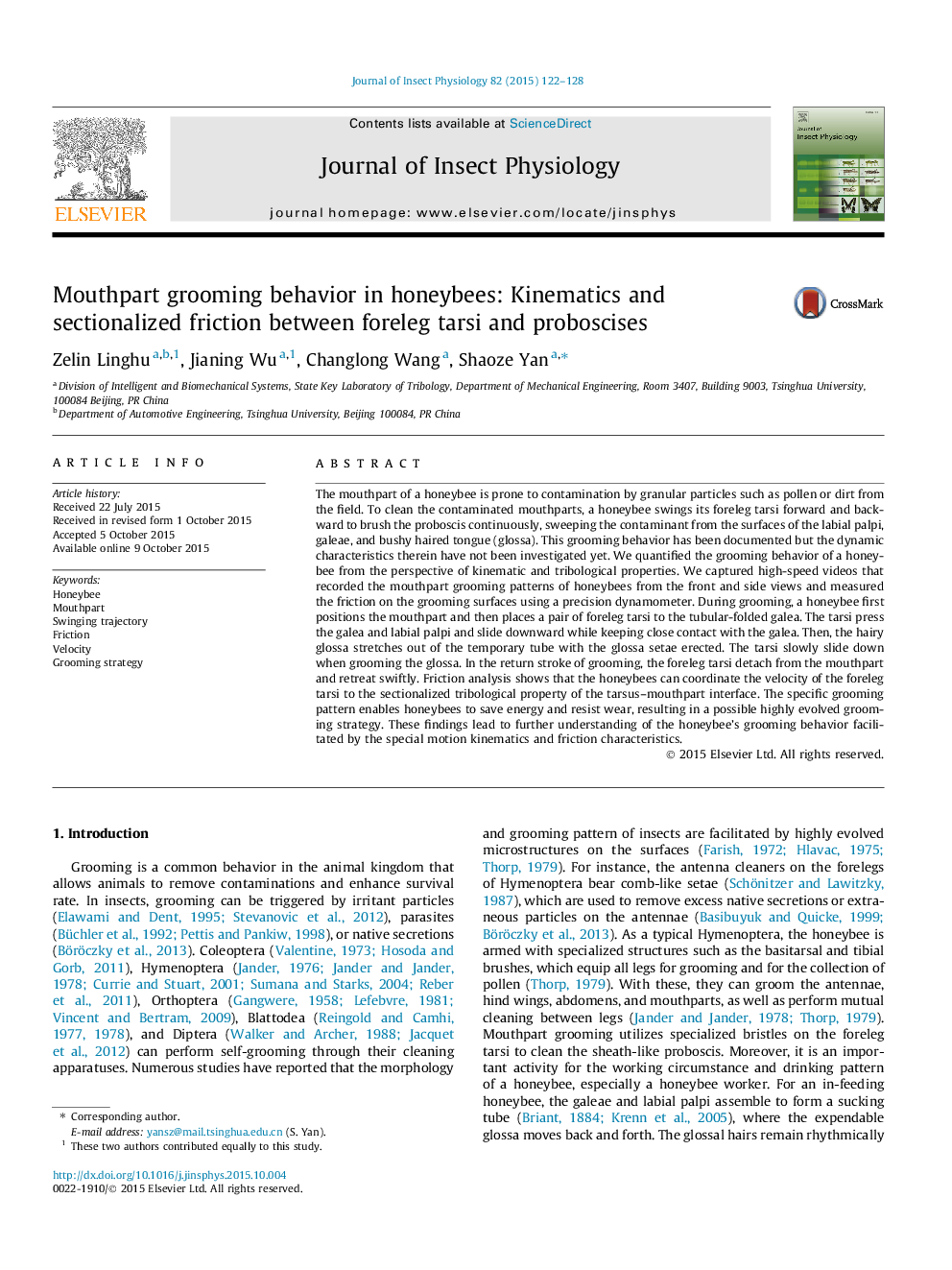| کد مقاله | کد نشریه | سال انتشار | مقاله انگلیسی | نسخه تمام متن |
|---|---|---|---|---|
| 5921489 | 1570988 | 2015 | 7 صفحه PDF | دانلود رایگان |

- Honeybee mouthpart grooming behavior and kinematics were quantified.
- The frictional properties of the tarsi-galeae and tarsi-glossa interface was measured.
- Honeybees coordinate tarsi velocity and frictional properties.
- Mouthpart grooming saves energy and resists wear.
The mouthpart of a honeybee is prone to contamination by granular particles such as pollen or dirt from the field. To clean the contaminated mouthparts, a honeybee swings its foreleg tarsi forward and backward to brush the proboscis continuously, sweeping the contaminant from the surfaces of the labial palpi, galeae, and bushy haired tongue (glossa). This grooming behavior has been documented but the dynamic characteristics therein have not been investigated yet. We quantified the grooming behavior of a honeybee from the perspective of kinematic and tribological properties. We captured high-speed videos that recorded the mouthpart grooming patterns of honeybees from the front and side views and measured the friction on the grooming surfaces using a precision dynamometer. During grooming, a honeybee first positions the mouthpart and then places a pair of foreleg tarsi to the tubular-folded galea. The tarsi press the galea and labial palpi and slide downward while keeping close contact with the galea. Then, the hairy glossa stretches out of the temporary tube with the glossa setae erected. The tarsi slowly slide down when grooming the glossa. In the return stroke of grooming, the foreleg tarsi detach from the mouthpart and retreat swiftly. Friction analysis shows that the honeybees can coordinate the velocity of the foreleg tarsi to the sectionalized tribological property of the tarsus-mouthpart interface. The specific grooming pattern enables honeybees to save energy and resist wear, resulting in a possible highly evolved grooming strategy. These findings lead to further understanding of the honeybee's grooming behavior facilitated by the special motion kinematics and friction characteristics.
Journal: Journal of Insect Physiology - Volume 82, November 2015, Pages 122-128